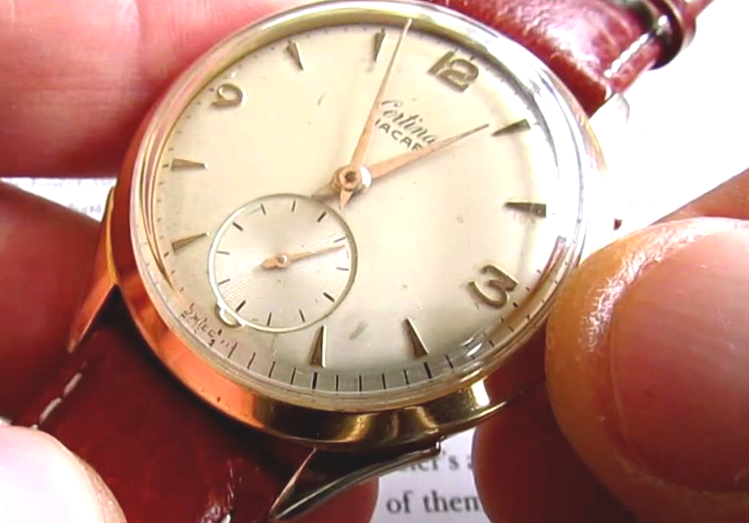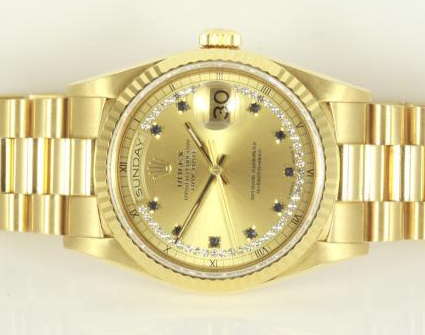Discover the Diversity of Watch Types
Automatic/Self-Winding Watches

These types of watches wind themselves through active movement of the wearer's wrist. Natural motions of the wearer's body will rewind the mainspring of the mechanical movement.
It's all about activity. If the wearer is not moving for large periods, or does not wear it actively for at least 12 hours a day, then its internal power reserve may run down causing the watch to eventually lose time or even stop. The more active, the more energy stored.
Providing the watch is on the wrist and the wearer is somewhat active, the watch will automatically self-wind with no other action required.
Quartz/Electronic Watches

Quartz is a mineral that responds in a rapid yet unvarying manner when electrically charged. In a quartz watch, a tiny piece of synthetic quartz is used as the stable oscillator for the timepiece effectively telling the watch how much time has passed. (All timepieces have some sort of oscillator e.g. a pendulum in a grandfather clock.)
Due to its oscillating consistency, quartz is associated with accurate timekeeping. Quartz watches can have either an analogue or digital face, and they are usually powered by a replaceable battery. Maintenance is straightforward, simply requiring a new battery every year or so.
Some quartz watches get their electricity from a mini electrical generator incorporated into the watch movement. Because this is powered by the wearers wrist, no replacing batteries is needed. These watches are known as Kinetic, Autoquartz or Omegamatic. Others, named as Eco-drive, are powered by a solar cell.
Mechanical or Manual Wind Watches

Despite their relative inconvenience, there is something old-world-romantic about a manually wound watch. Still produced in Switzerland, the wearer must manually wind it every day or two to maintain correct time. Collectors find these kinds of watches extremely desirable.
Mechanical watches differ from quartz watches in that the time keeping is delivered through purely mechanical means. The winding action stores energy in the wound spring, and this energy is released through a highly regulated set of gears (the wheel train) and an escapement. Some include a power reserve, allowing the watch to go up to 8 days on a single wind.
Analogue Watches

Big hand, little hand. Traditionally, watches have displayed the time in analogue form, with a numbered dial upon which are mounted at least two rotating hands an hour hand and a longer minute hand. Some incorporate a third hand showing seconds.
Digital Watches

More and more common with the advent of smaller electronic componentry, a digital display simply shows the time as a number, e.g., 12:08. It may also feature other modes such as date, alarm, stopwatch, countdown timers and more.
Moonphase Watches
Often seen on Chronographs as a sub dial within the watch face, a Moonphase indicator is a display of the lunar phase.
Chronograph and Chronometer - What is the Difference?
The term chrono, when placed in front of something, categorically refers to time. However, it's what gets tacked on the end of it that is commonly confused among new watch enthusiasts. Two in particular are chronograph and chronometer made more confusing by the fact that a watch can be one, both or none at all! Simply put, a chronograph describes a certain type of watch, while chronometer is a measure of watch quality.
Chronograph
A chronograph is a watch that has a mechanical stopwatch function. Typically, the top pusher will start and stop the chronograph. The bottom pusher will reset it. It was invented in 1821 so that King Louis XVIII could measure how long horse races took.
A chronograph will still maintain standard watch functions telling the time of day, but will also contain dials to measure elapsed time for events of short to medium durations. Because of the links to sport in stopwatch timing functions, chronographs will often be finished in a sporty image, and may incorporate other dials such as moon phase or even pulse rate.
Chronometer
A chronometer watch has a high quality mechanical or a thermo-compensated quartz movement that has been tested and certified to operate within a certain standard of accuracy. This seal of approval is handed out by the Official Swiss Chronometer Testing Institute (COSC) an official Swiss Government agency.
For a watch to be labelled a chronometer (usually written such on the dial), it must pass 15 days of rigorous tests to prove its superior timekeeping. The accuracy of the movement is checked in 5 different positions and at various temperatures simulating the conditions under which the watch might be worn. Precision is the key, with the watch needing to average between +6 and -4 seconds per day in order to earn the certification.
